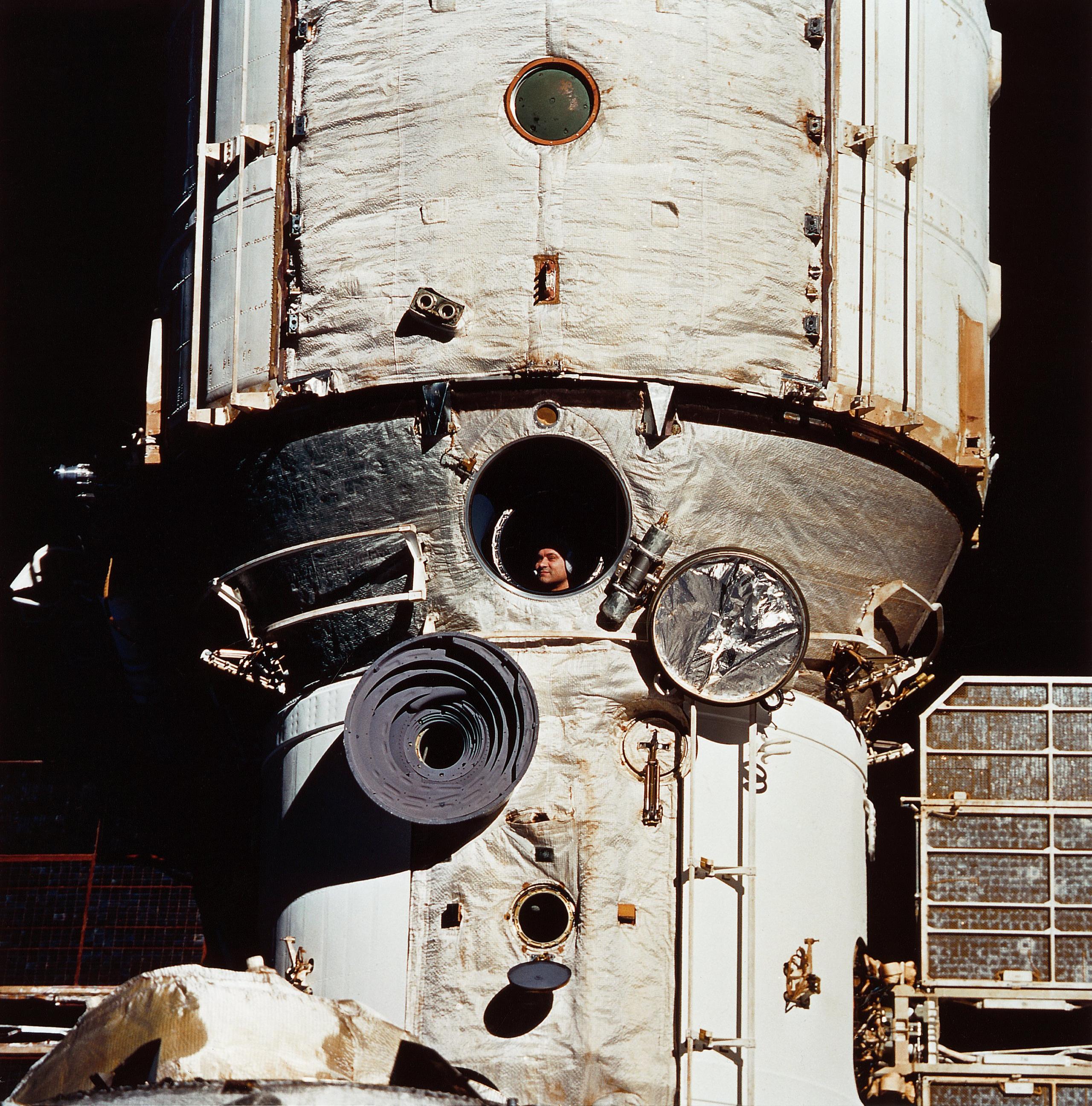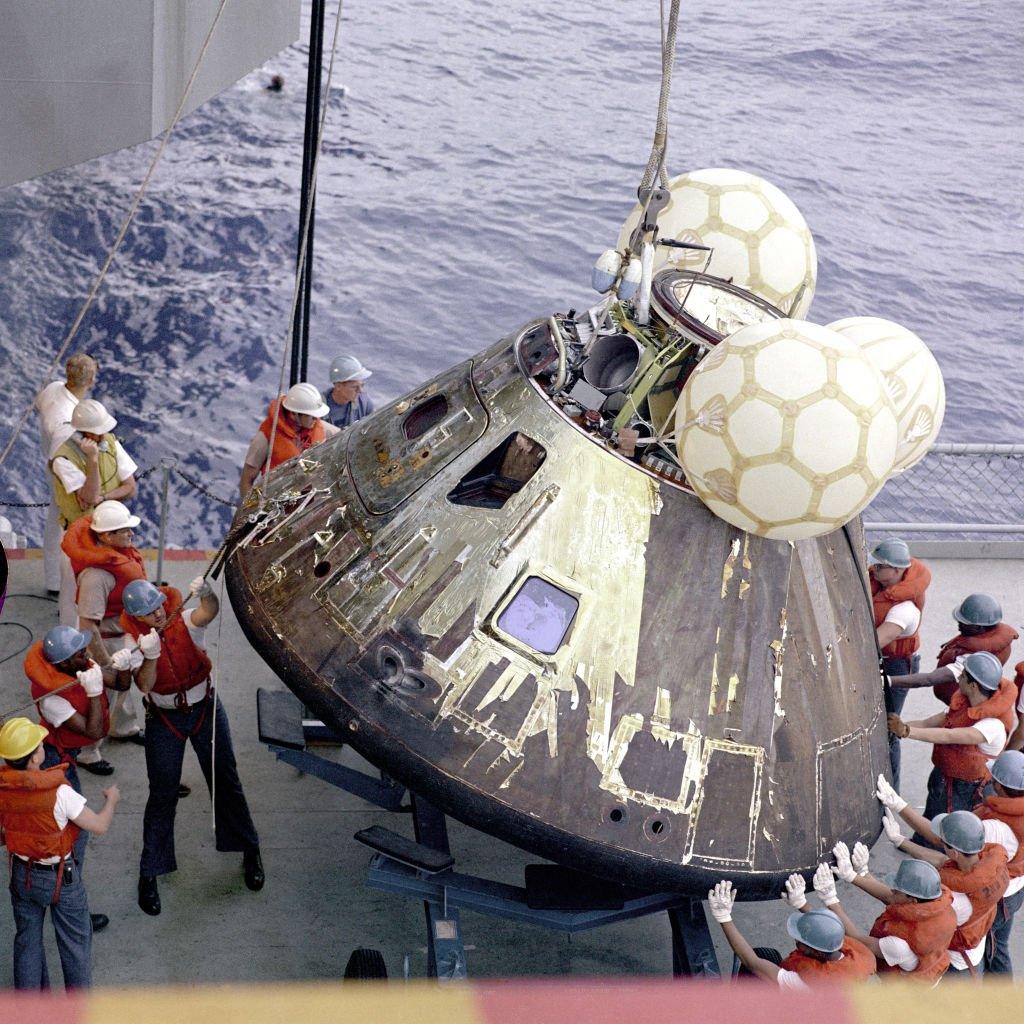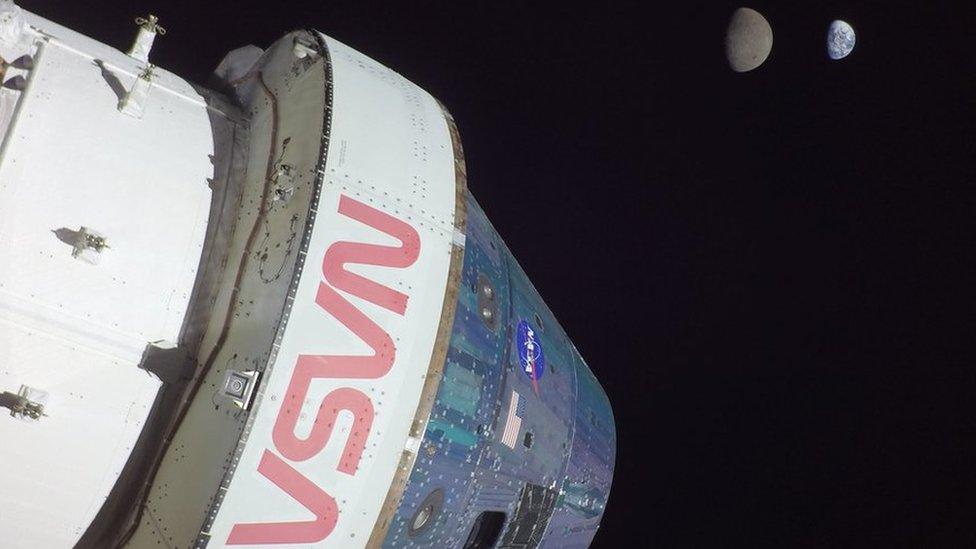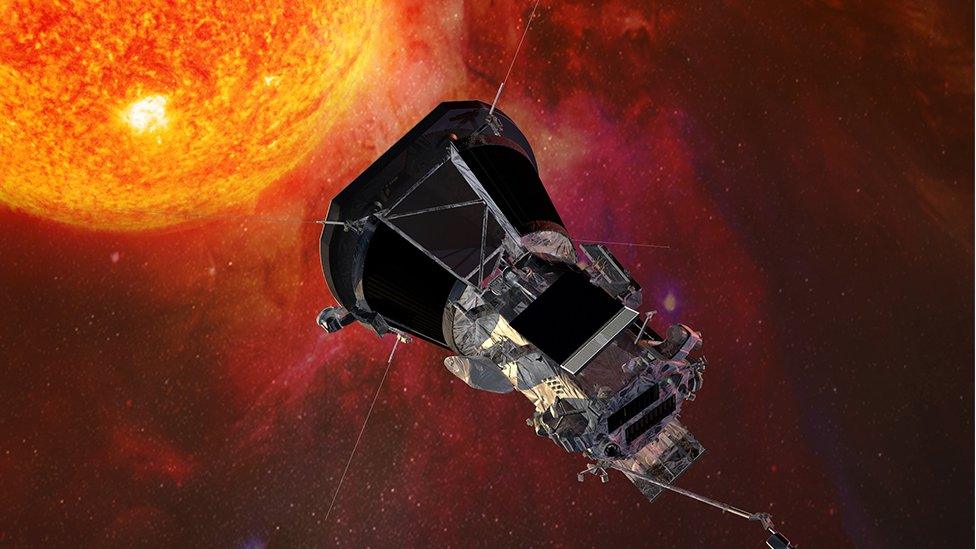What's the longest amount of time someone has been in space?
- Published
- comments

Frank Rubio has landed back on Earth after spending more than a year in space
Frank Rubio has just returned to Earth after being in space for 371 days, breaking the record for the longest amount of time in space by a US astronaut.
Rubio has been on the International Space Station (ISS) since September 2022, beating the previous record held by another Nasa astronaut, Mark Vande Hei.
The Russian Soyuz space craft returned him and his crewmates, cosmonauts Sergey Prokopyev and Dmitri Petelin back to Earth until on 27 September.
It means Rubio is the first American to spend more that a year in space.

Rubio and his crewmates, cosmonauts Sergey Prokopyev and Dmitri Petelin
Nasa TV captured images of white particles streaming out of the capsule in December
Breaking records wasn't part of the original mission plan.
The spacecraft that carried Rubio and his crewmates had a coolant leak in December and it was decided that it would be unsafe to use for the trip back home.
Instead, Russia's federal space agency Roscosmos decided to launch an empty Soyuz craft to the space station to bring Rubio, Prokopyev and Petelin back to Earth.
Check out more out-of-this world records below.
What is the record for most consecutive days spent in space, ever?

Cosmonaut Valeri Polykov looks out the window of the Russian space station Mir
Russian cosmonaut Valeri Polyakov still holds the all-time record for the most days spent in space in one go.
He was onboard Russia's Mir space station for 437 continuous days in orbit between 1994 and 1995.
Furthest distance a person has travelled in space

A photo of a crater on the far side of the Moon, taken during the Apollo 13 mission
The furthest a human being has ever been from Earth was during the Apollo 13 mission in 1970.
American Nasa astronauts James Lovell, Fred Haise and John Swigert passed over the side of the Moon that doesn't face the Earth - sometimes referred to as the "dark" side of the Moon - 248,655 miles (400,171 km) from our home planet.
The original mission was to land two astronauts - James Lovell and Fred Haise - onto the surface of the Moon, but after an oxygen tank explosion the crew had to instead find a way to get back Earth.
Using the Moon's gravity as a slingshot to propel their craft back home, the crew was able to return safely.

The module that returned the crew of Apollo 13 safely back to Earth
It's likely that future crewed missions to the Moon will beat Apollo 13's distance record.
A test flight, with no one onboard, saw Nasa's Orion capsule travel 270,000 miles away from Earth.
That mission was part of Nasa's Artemis programme which aims to return people to the Moon's surface for the first time in more than 50 years.

The Artemis Orion capsule broke a distance record in space in 2022
Furthest human-made object in space
The most distant human-made object in space is a probe called Voyager-1, which is currently travelling nearly 15 billion miles away from Earth.
Voyager-1 was launched by Nasa along with another identical probe called Voyager-2, in 1977.
The probes, which don't have a crew, had a mission to give us a closer look at the moons on Jupiter and Saturn, but since then have continued on into deep space.
Ricky explains why Voyager-1 is such a big deal
Voyager-1 was also the first man-made object ever to leave our solar system.
Last year Nasa announced that it is powering down some of the probes' systems, although they will both keep working until 2030, when they will be left to shut down and just float through space.
Both spacecraft have records showing the sounds, images and diversity of life on Earth - in case either probe is picked up by alien lifeforms in the future.
Fastest spacecraft speed

The fastest speed by a spacecraft is 364,660 mph (586,800 km), which was achieved by the Parker Solar Probe in 2021.
The spacecraft also made history - becoming the first craft to 'touch' the Sun.
The probe flew through the outer atmosphere of our nearest star, in the part of the Sun known as the corona.
The Sun has very strong gravity, so as the probe performed its super-close flybys it accelerated to incredible speeds.
- Published25 January 2023

